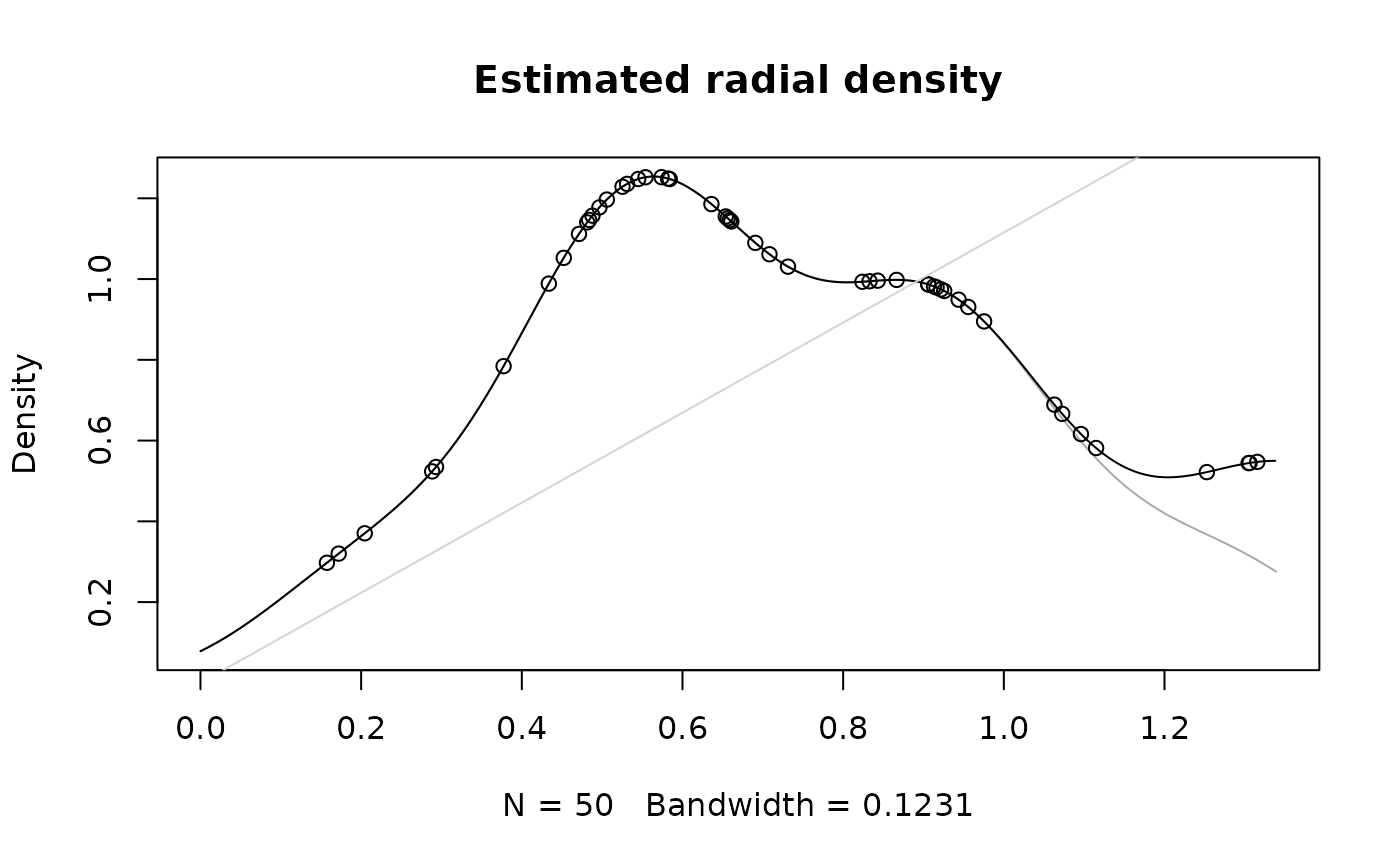
Inverse radial density weights
inverse_radial_density.RdCompute a vector of weights for a set of elements (traps), to account for inhomogeneous spatial distribution relative to a reference (release) point.
Value
A inverse_radial_density object, which is a numeric vector of
weights (one for each trap in x, in the same order), with a set of
attributes used in the plot method.
Details
The radial density of traps (i.e. number of traps in a ring ($r$, $r+dr$), divided by the surface area of the ring) is proportional to the radius under a spatially homogeneous distribution of traps, with a proportionality constant of \(2 / R^2\), where \(R\) is the maximum radius.
This function performs a kernel-density estimation of the radial density of the given set of traps, using a boundary correction to avoid edge effects, and returns weights calculated as the inverse of the relative density, with respect to the expected density under homogeneity.
These weights can be used to adjust trap counts by spatial arrangement, in situations where the relationship between counts and the distance from the release point is relevant.
